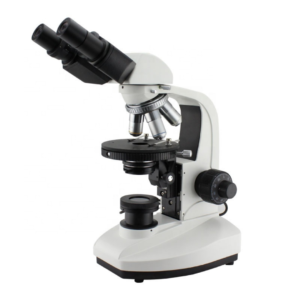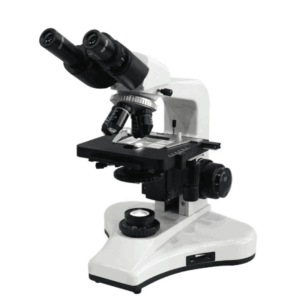The Combination Tissue Flotation Bath and Slide Dryer is a high-efficiency histological workstation that integrates a flotation bath, dryer, and oven into a single, digitally controlled unit. It offers high throughput (up to 180 slides per oven cycle) and precise thermal control. It is an ideal solution for pathology laboratories looking to optimize space and guarantee maximum quality in the adhesion of paraffin tissue sections to slides.




Parameter | Detail |
Model | RD-2018 |
Equipment Type | Combination of Flotation Bath; Slide Dryer; and Oven |
Temperature Range (Bath; Dryer; Oven) | 0℃ to 75℃ (0℃ to 99℃ option available) |
Temperature Control | Computer precise temperature control (Microprocessor-controlled) |
Screen | Medical-grade high-definition color touch screen |
Flotation Bath Volume | 2 Liters (2L) |
Dryer Capacity (Plate) | 60 tissue sections simultaneously (Wear-resistant; multi-layer bevel design) |
Oven Capacity | 180 slides simultaneously (Holds 6 standard staining racks of 30 slides each) |
Heating Time | Reaches 75℃ in up to 10 minutes |
Product Dimensions (W x D x H) | 570 mm x 430 mm x 180 mm |
Water Bath Dimensions | 210 mm x 170 mm x 55 mm |
Oven Dimensions | 240 mm x 152 mm x 110 mm |
Power Supply | AC220V±10%; 50Hz±1Hz |
Power | 600 VA |
Additional Features | Separate heating for Oven/Dryer; Programmable timing switch function; Unique timing reminder function. |

The Combination Tissue Flotation Bath and Slide Dryer is an essential pathological instrument designed to optimize and consolidate the final stage of histological processing: the preparation of tissue slides for microscopic examination. This equipment combines three critical functions into a single compact unit: a Tissue Flotation Bath, a Rapid Slide Dryer Plate, and a Slide Oven/Dryer. Its main purpose is to facilitate the flattening of paraffin-embedded tissue sections (obtained from the microtome) and the subsequent optimal drying and adhesion of these sections to the slides—a crucial step in ensuring the quality of histopathological diagnosis.
The CS-RD-2018 is used in conjunction with the following equipment and materials in the histopathology laboratory:
Standard glass slides for mounting the sections.
Used to transport and hold slides within the Oven section.
A 2L container for distilled water, where tissue sections are “stretched” to remove wrinkles.
An inclined, wear-resistant surface designed to drain excess water and rapidly dry up to 60 sections.
To increase the heating efficiency of the flotation bath.
The operator must be trained in the following basic phases of using the RD-2018:
Preparation:
Fill the Flotation Bath with distilled water to the working level.
Turn on the unit and use the touch screen to set the desired temperature for the Flotation Bath (usually 5-10°C below the paraffin melting point, typically 40-50°C) and for the Oven/Dryer (typically 60-70°C).
Flotation and Flattening:
Cut the tissue sections with the microtome and carefully transfer them to the water surface in the Flotation Bath.
Observe the tissue sections as they flatten and wrinkles are removed.
Pick up the flattened tissue onto the glass slide.
Initial Drying (Beveled Plate):
Place the slides on the Inclined Drying Plate to drain excess water and allow for rapid initial drying.
Final Drying and Adhesion (Oven):
Transfer the slides (usually in staining racks) to the Oven chamber.
Use the timer function (if necessary) to ensure the appropriate drying time (typically 30-60 minutes), which is essential for strong tissue adhesion.
Maintenance and Cleaning:
Turn off the unit after use.
Empty and clean the Flotation Bath regularly to prevent microbial growth or paraffin build-up.
The CS-RD-2018 is a processing and preparation instrument; therefore, it does not generate direct analytical data. The primary “data” that is evaluated is the quality of the final product (the slide), which is subsequently analyzed under a microscope.
Quality Parameters to Evaluate (Output Data):
Section Integrity: Absence of wrinkles, folds, or tears in the tissue.
Tissue Adhesion: The firmness with which the tissue is adhered to the slide, preventing lift-off during subsequent staining procedures (H&E, IHC).
Consistency: Uniformity in the stretching and drying of the sections, achieved through the equipment’s precise temperature control.
The quality of the slide preparation is a critical factor that directly impacts the validity and interpretation of histological data (microscopic images and measurements).
The combination flotation bath and dryer is a de facto standard in modern histopathology laboratories. Reference literature in histotechnology, such as the National Society for Histotechnology (NSH) manual or Bancroft’s texts, emphasizes the necessity of precise temperature control.
Scientific Context: Temperature control is vital for:
Flattening: Keeping the bath water just below the paraffin melting point allows for stretching without causing distortion or cellular damage.
Adhesion: Oven drying is a necessary “curing” step to form a strong bond between the tissue and the slide. The oven temperature must be high enough to melt the paraffin, but not so high as to damage the tissue’s protein structures (antigens), especially in preparations intended for Immunohistochemistry (IHC). The RD-2018, with its temperature ranges up to 99°C, provides the flexibility to meet the most rigorous adhesion standards.
Shenyang Roundfin Technology Co., Ltd. (2024). Product Data Sheet: RD-2018 Combination Tissue Flotation Bath and Slide Dryer. Retrieved from: https://www.roundfin.com/product/roundfin-rd-2018-combination-tissue-flotation-bath-and-slide-dryer
Carson, F. L., & Hladik, C. (2009). Histotechnology: A Self-Instructional Text. 3rd ed. ASCP Press. (Standard reference for tissue flotation and drying protocols).
There are no questions yet. Be the first to ask a question about this product.